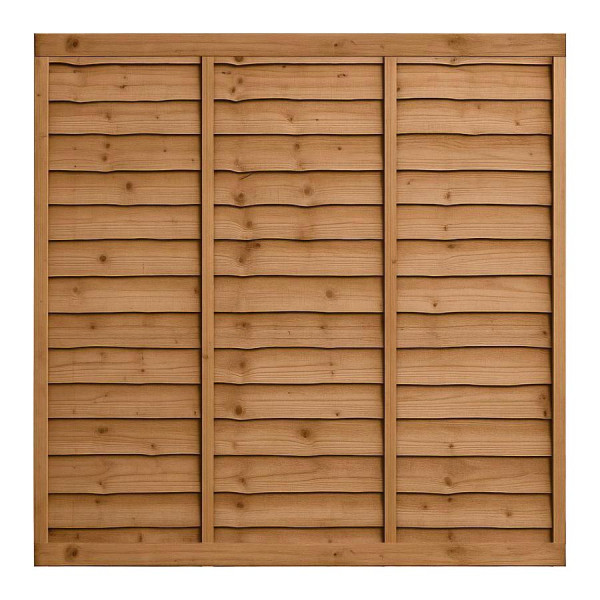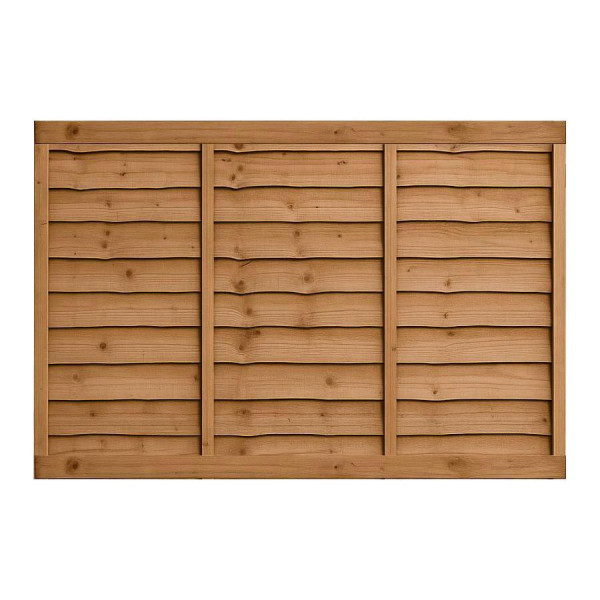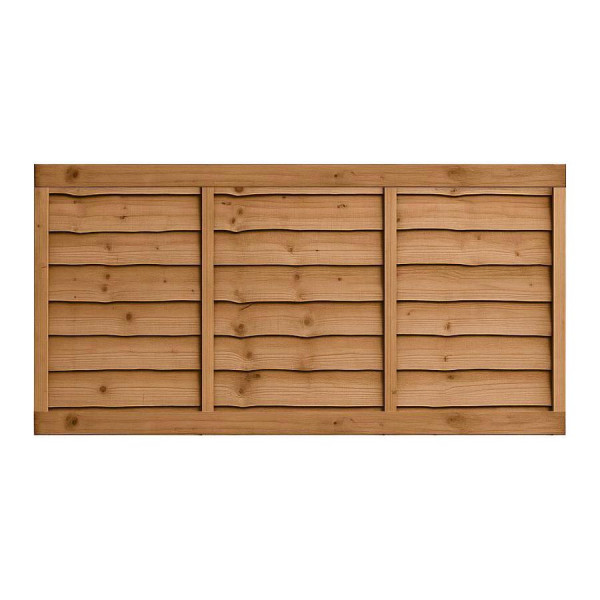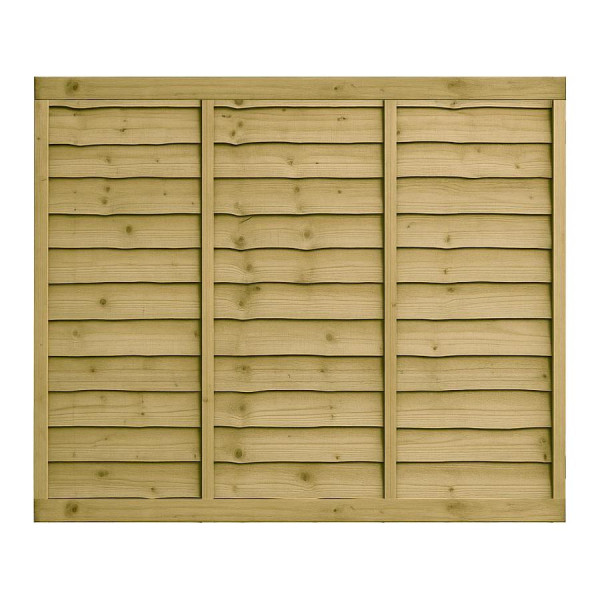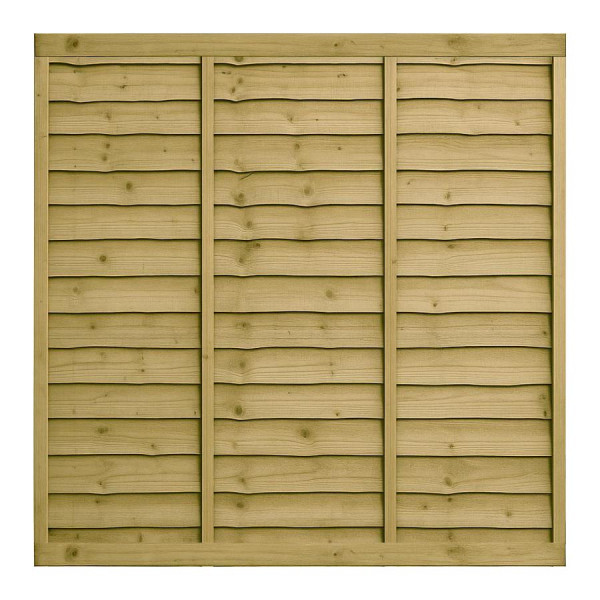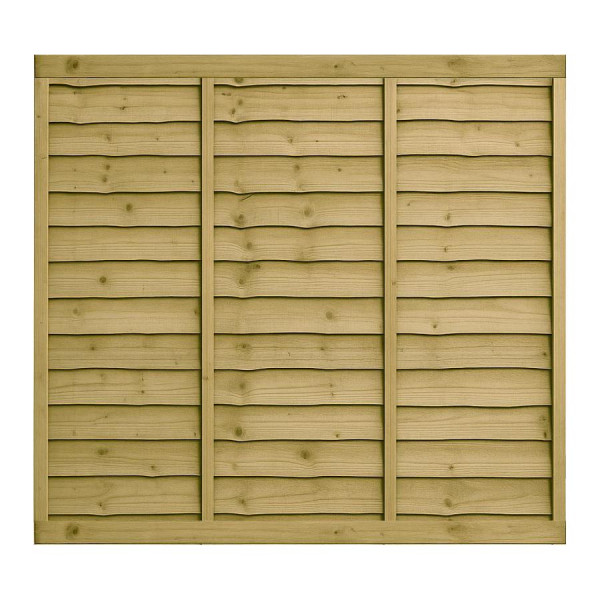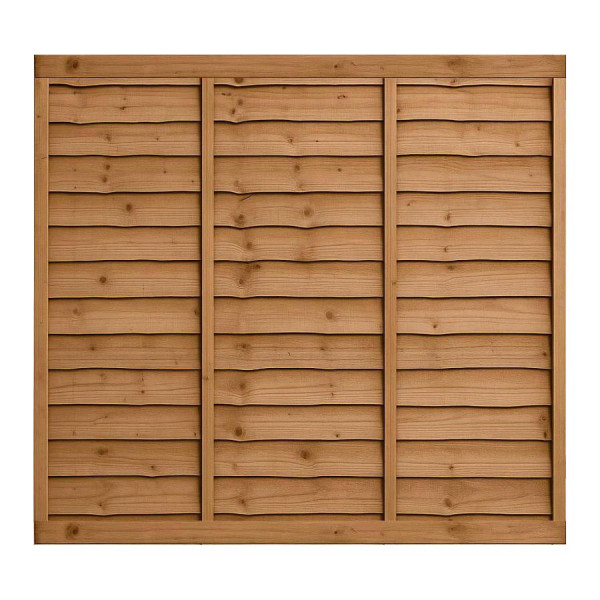Buy Waney Lap Fence Panels for Affordable, Reliable Garden Privacy
Need a straightforward, budget-friendly way to tidy your boundaries and boost privacy? Waney lap fence panels—often called “overlap” or “larch-lap” panels—deliver the familiar British look at a sensible price, with easy planning and quick installation. At East Coast Fencing, our range of wooden fence panels is selected for outdoor use and sized for standard bay centres, so you can refresh a long run or replace a few tired bays without drama. Choose the heights that suit your plot, pair the panels with compatible posts, a protective base board and a neat top line, then check out confidently—free delivery applies on orders £99+.
Why choose waney lap fence panels?
Waney lap is the UK’s classic garden fencing style for good reason. The horizontal overlap face gives immediate screening, a warm timber texture and a calm, uniform look from the house and the street. It’s the sensible option for long boundaries, side passages and rental properties where you want quick, tidy results that neighbours recognise and appreciate. Because the language is familiar, lap panels sit comfortably beside brick, paving, decking and cottage planting without trying to steal the show.
Where waney lap panels make the most sense
Refresh tired boundaries on a budget, create a clean edge to pet-friendly gardens and keep side returns orderly. Along patios, a modest height delivers comfortable seated privacy without overwhelming the space; along the back boundary, stepping up a size gives a composed backdrop that helps the whole garden feel finished. On family plots, the horizontal face is forgiving of day-to-day knocks from balls, bins and bikes—especially when you protect the base against damp soil and splashback.
Plan your run once—then build with confidence
Walk the line and map the moments that matter: dining areas, kitchen windows, neighbour sightlines, breeze corridors. Decide early whether you’ll step or rake the top line on sloping ground—stepped bays look crisp and rhythmic; raked tops flow when the fall is gentle and consistent. Confirm bay centres, allow for corner and gate posts, and sketch your base datum so gravel boards and capping align neatly. Consistency here saves time on the day and is the difference between “assembled” and “designed”.
Posts, base protection and the tidy top line
Great panels deserve a compatible backbone. For maintenance-light straightness and simple future swaps, pair lap panels with slotted concrete fence posts. Prefer a warm, all-timber composition you can tune on site? Choose robust wooden fence posts and finish with post caps for protection. At ground level, a protective plinth lifts cladding clear of damp soil and strimmer rash—on high-wear routes and softer ground, many installers opt for concrete gravel boards; elsewhere, a timber board keeps the look continuous. Above, a simple capping rail ties the skyline and sheds water away from board ends—our panel capping profiles make that easy.
Heights, widths and the sizes homeowners actually use
Typical UK projects use bays around \~1.83 m centres with panels in familiar heights (e.g., approx. 6x6, 6x5, 6x4). Choose full privacy near seating and windows, then drop a size toward the front to keep streetscapes friendly. On sloping plots, decide step increments before you dig and choose longer posts where the line rises so embedment depth stays sensible. If wind exposure is significant, shortening bay widths slightly or introducing a few semi-open bays elsewhere on the boundary helps pressure dissipate while your main seating area keeps its comfortable, solid backdrop.
How lap panels compare with other popular styles
Every panel language has a job it does best. Waney lap is the value-led, familiar choice for long runs—practical and neighbour-friendly. Where you need extra stiffness and maximum privacy in gusty areas, consider the vertical texture and heavier framing of closeboard fence panels. If light and airflow are priorities around modern patios or garden rooms, slatted designs offer calm horizontal rhythm and a more open feel; patterned decorative styles add friendliness near entrances and sociable spaces. Mixing with intent often gives the best results: solid comfort where you live outdoors, lighter language where you pass through.
Installation pointers for straight, quiet lines
Set end and corner posts first and pull a taut string at final top height to discipline the skyline. Form sound footings; on softer ground, tamp a granular base before you pour and backfill in lifts to remove voids. With slotted concrete posts, seat the gravel board in the lower slot, slide the panel above and pack level with purpose-made shims—avoid improvised wedges that trap water and buzz in wind. With timber posts, pre-drill near edges and fix using exterior-grade screws; seat heads flush rather than crushing fibres, and keep screw rows aligned for a professional look. Maintain a modest ground gap below cladding for airflow and easier mowing—that tiny reveal pays back in longevity and day-to-day neatness.
Detailing that elevates a simple boundary
Small disciplines deliver a big upgrade to lap fencing. Align cap heights across the run, land joints on posts, and keep bay centres consistent so the rhythm reads deliberate. At the base, the plinth doubles as a clean divider between lawn and beds, keeping gravel and mulch where they belong. Where the line meets a gate, continue the horizontal language with a simple boarded leaf, or contrast gently with a lighter pattern near the threshold—either approach works if you place the change at a logical transition.
Wind exposure, pets and day-to-day practicality
On breezy corridors and coastal fringes, reducing bay width and stepping up post section helps the skyline stay composed. Pet owners often prefer a slightly taller base board to tighten ground gaps, reducing escapology attempts from small dogs and helping keep urban wildlife out. Along mowing edges, the board takes knocks from strimmers so your panels don’t have to; in narrow side returns, a concrete plinth is a smart, low-effort upgrade that shrugs off bumps from bins.
Finish and colour: make it yours
Pressure-treated timber can be left to mellow to a soft silver for a relaxed, plant-led look. Stained browns ground taller boundaries next to brick and decking; deeper charcoals sharpen modern spaces and make foliage pop; lighter tints brighten narrow side passages. Whatever you choose, repeat the tone across posts, caps and any gate so the composition reads coherent from the kitchen and the street.
Care and seasonal checks—light touch, long service
Lap panels reward simple habits. Brush away leaf build-up from rails each autumn, keep soil and mulch below the top of the gravel board and avoid harsh jet-washing near joints. In spring, tighten fixings lightly and refresh breathable finishes as desired. If you trim or notch during alterations, seal fresh end grain before refitting. Where planters sit close to fencing, stand pots off slightly so surfaces dry quickly after rain—little details that help panels stay straighter and quieter in wind.
Working with slopes, corners and awkward runs
On a slope, choose step increments you can repeat confidently and commit to them across the run; a regular rhythm reads calm, even when levels change. At corners, carry rail heights through the turn and reinforce junctions so seasonal movement doesn’t open gaps. Around downpipes and taps, notch frames neatly, treat fresh cuts and leave access for maintenance; you’ll thank yourself later when repairs or upgrades are needed.
What to add to basket (so nothing stops you on install day)
Think in systems, not single parts. You’ll need posts that suit your maintenance goals and style, a protective base board, a neat top detail and reliable fixings. Keep a handful of purpose-made packers for levelling and a post-setting mix that lets you move at pace without compromising strength. Choosing well here makes the actual build feel straightforward and keeps the fence composed for years.
Quick buyer’s checklist
- Pick your backbone: low-upkeep lines with slotted concrete posts or a warm, adjustable build with timber posts.
- Protect the base and set your datum with gravel boards; add panel capping to unify the skyline.
- Map privacy by height: full privacy at the back, a step down toward the front for a friendly streetscape.
- Need extra stiffness in exposed spots? Consider upgrading selective bays to closeboard while keeping lap where it shines.
Order waney lap fence panels today
Waney lap panels remain the dependable, great-looking choice for cost-effective garden privacy. Plan your heights and centres, choose the posts and base details that fit your maintenance goals, and add a neat capping line so everything reads designed. Place your order with East Coast Fencing today and enjoy the simplicity of free delivery on orders £99+.
We also supply lap fence panels in wholesale quantities
through our dedicated stockist portal, GardenFencingSupplies.co.uk, making it easy for merchants and stockists to browse, order, and manage their fencing requirements online.



